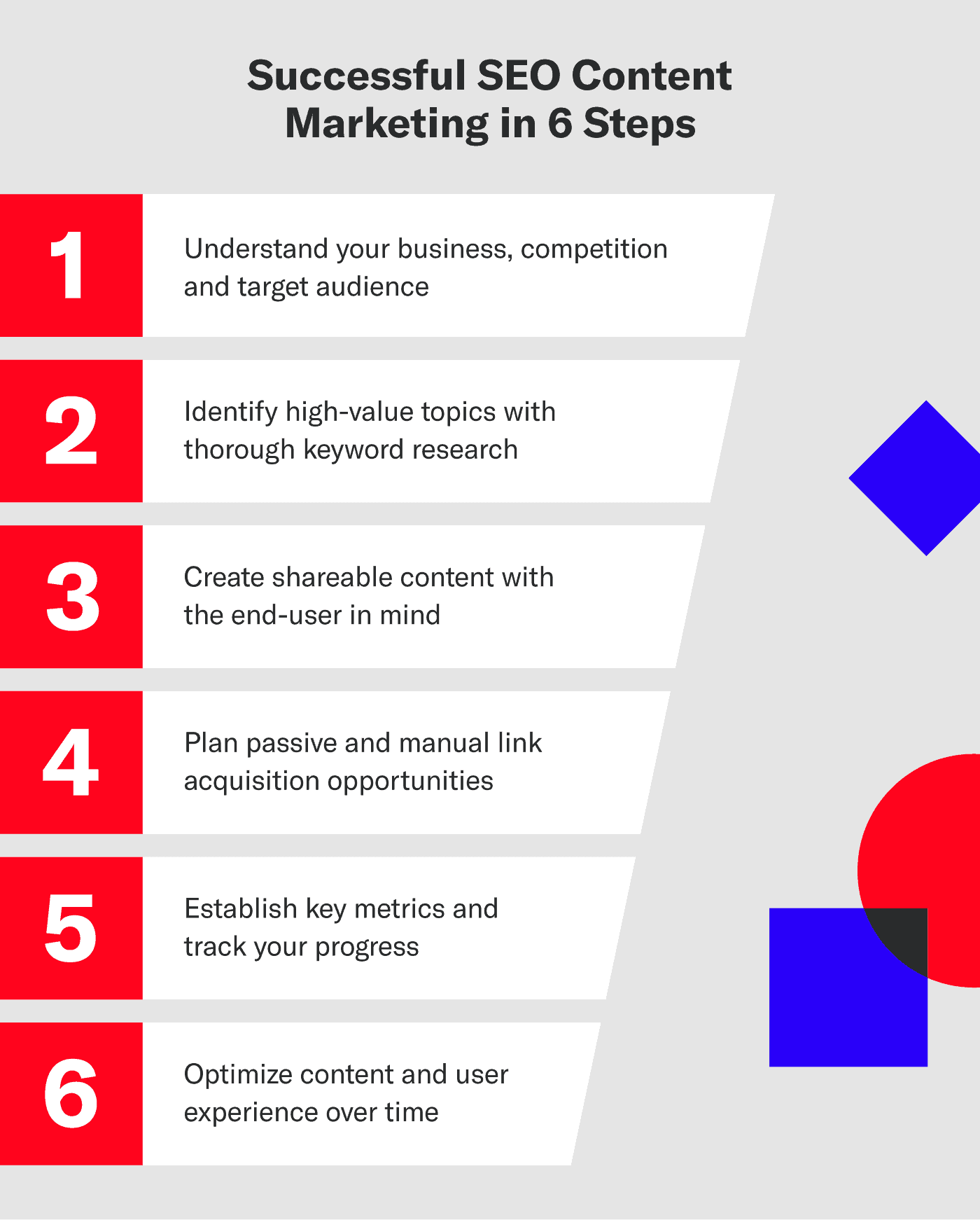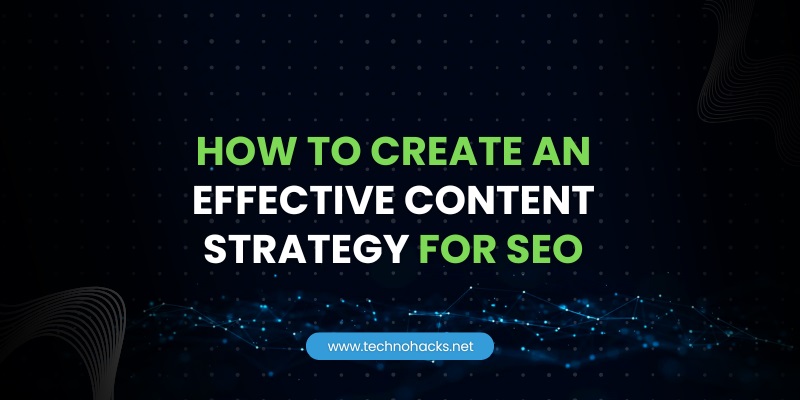How to Create an Effective Content Strategy for Seo
Creating an effective content strategy for SEO is crucial. It helps boost your website’s visibility on search engines.
To succeed in SEO, understanding content strategy is vital. It involves planning, creating, and managing content to attract and engage your target audience. An effective strategy ensures your content ranks high on search engines, driving organic traffic to your site.
This blog will guide you through the essential steps to develop a content strategy that enhances your SEO efforts. From identifying your audience to selecting the right keywords, you’ll learn how to craft content that meets search engine guidelines and user expectations. Ready to improve your site’s ranking? Let’s dive in!
Table of Contents
Setting Goals And Objectives
Setting clear goals and objectives is crucial for an effective content strategy. Goals provide direction, while objectives help measure progress. Without these, efforts may lack focus and yield poor results. Let’s dive into how to set these goals and objectives for your content strategy.
Identifying Target Audience
First, know who you are writing for. Understanding your target audience is key. Consider their age, gender, interests, and challenges. This information shapes your content. It ensures relevance and engagement. Use surveys, social media insights, and website analytics for data.
Defining Key Performance Indicators
Key Performance Indicators (KPIs) help track success. Decide what metrics matter most. These could be organic traffic, click-through rates, or conversion rates. Choose KPIs that align with your goals. Monitor these regularly. Adjust your strategy based on the results. This ensures continuous improvement.

Credit: masterful-marketing.com
Conducting Keyword Research
Conducting keyword research is a cornerstone of an effective content strategy for SEO. It helps identify the terms your audience uses when searching for information. This step ensures your content aligns with user intent and ranks well on search engines. Let’s dive into how you can find relevant keywords and analyze competitor keywords.
Finding Relevant Keywords
Begin by brainstorming a list of topics related to your niche. Think about what your audience might search for. Use tools like Google Keyword Planner or Ubersuggest to find specific terms. These tools show search volume and competition level for each keyword. Aim for keywords with high search volume but low competition.
Long-tail keywords are also valuable. These are longer and more specific phrases. They usually have lower competition but can drive targeted traffic. For example, instead of “shoes,” use “best running shoes for flat feet.”
Analyzing Competitor Keywords
Next, analyze the keywords your competitors target. Visit their websites and look at their content. Identify the terms they rank for. Tools like SEMrush or Ahrefs can help with this. These tools show the keywords your competitors rank for and their search volumes.
Look for gaps in their strategy. Are there relevant keywords they missed? Target these gaps with your content. This can give you an edge in the search rankings. Understanding your competitors’ keyword strategy helps you refine your own approach.
Content Creation And Optimization
Creating an effective content strategy for SEO involves researching keywords and understanding audience needs. Regularly updating content ensures relevance and higher search rankings. Focus on quality and engagement to attract organic traffic.
Creating a solid content strategy for SEO is crucial for driving organic traffic and engaging your audience. One of the vital aspects of this strategy is content creation and optimization. This involves crafting engaging content and applying on-page SEO techniques to ensure your content is discoverable and valuable to your readers.
Crafting Engaging Content
Engaging content is the backbone of any successful SEO strategy. Start by understanding your audience. What are their pain points? What solutions are they looking for? Tailor your content to meet these needs.
Use a variety of content types such as blog posts, videos, and infographics. This keeps your audience engaged and caters to different learning styles. I remember writing a detailed guide on digital marketing. Including real-life examples and personal anecdotes made it more relatable and engaging for my readers.
Keep your content clear and concise. Short paragraphs and bullet points improve readability. Use headings and subheadings to break up text and guide your readers through your content. This structure not only makes your content user-friendly but also helps search engines understand the context better.
On-page Seo Techniques
On-page SEO techniques are essential for making your content visible to search engines. Start with keyword research. Tools like Google Keyword Planner can help you find relevant keywords for your topic. Use these keywords naturally in your content, especially in the title, headings, and first paragraph.
Optimize your meta descriptions and title tags. These elements appear in search results and can influence click-through rates. Make them compelling and include your primary keyword.
Use internal and external links. Internal links help distribute page authority across your site and keep users engaged. External links to credible sources can enhance your content’s credibility. Imagine you’re writing about healthy diets and link to a reputable medical journal; this boosts your content’s trustworthiness.
Don’t forget about images. Use relevant images to break up text and add visual interest. Optimize image alt text with keywords to improve your site’s SEO.
Finally, keep your content updated. Regularly revisit old posts and refresh them with new information. This practice not only keeps your content relevant but also signals to search engines that your site is active.
Incorporate these strategies into your content creation and optimization process. What techniques have you found most effective in engaging your audience and improving your SEO?

Credit: www.siegemedia.com
Measuring And Adjusting Strategy
Regularly measure and adjust your content strategy to stay effective for SEO. Analyze metrics and tweak plans to match evolving trends. This approach ensures your content remains relevant and engaging.
Creating an effective content strategy for SEO doesn’t end after you hit publish. You need to measure and adjust your strategy constantly. This ensures your efforts lead to real results. So, how do you track and tweak your SEO content strategy effectively? Let’s break it down.
Tracking Performance Metrics
To understand how well your content performs, you need to track specific metrics. Tools like Google Analytics can provide valuable insights.
Look at organic traffic to see how many visitors find your site through search engines. Check the bounce rate to determine if visitors stay on your site or leave quickly.
Also, review the average session duration. This tells you if your content keeps people engaged. Don’t forget to monitor keyword rankings. Are you improving for your target keywords?
Making Data-driven Adjustments
Once you have your data, it’s time to make adjustments. Look at the pages with high bounce rates. Are they aligned with user intent? If not, tweak the content to better answer their questions.
If certain topics attract more traffic, consider creating similar content. This can boost your visibility and meet user demand.
Pay attention to the keywords where you’re lagging. Optimize your content with these terms but ensure it reads naturally. Sometimes small changes can lead to significant improvements.
Remember, SEO is a continuous process. Regularly review your data and adjust your strategy accordingly. This keeps your content relevant and your rankings high.
Have you ever noticed a sudden drop in your traffic? What steps did you take to address it? Share your experiences and insights.

Credit: ninjapromo.io
Conclusion
Crafting an effective content strategy is key for SEO success. Focus on understanding your audience. Research keywords and create quality content regularly. Monitor your performance and adjust as needed. Stay consistent and patient. Over time, you will see results. Remember, good content attracts and retains readers.
Keep learning and refining your approach. Your efforts will pay off with better search rankings and more traffic.

